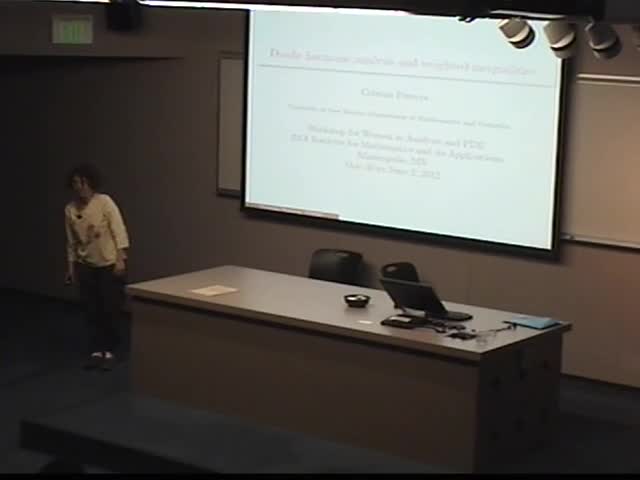Dyadic harmonic analysis and weighted inequalities
Presenter
May 30, 2012
Keywords:
- harmonic analysis
Abstract
In this minicourse we will introduce some basic ideas in harmonic analysis via simpler dyadic models and dyadic tools such us Haar shift operators and Bellman functions. We will show how they can be used to describe important continuous objects such as the Hilbert transform or more generally singular integral operators. We will illustrate the power of this approach with the successful resolution of the $A_2$ conjecture by Hytonen.
The minicourse is aimed at graduate students with a basic background in analysis, including a first course in measure theory and functional analysis, but also to recent graduates with an interest in the area.
We will carefully describe the dyadic setting, introduce Haar functions, and basic dyadic operators such as: martingale
transform, dyadic maximal function, dyadic square function, dyadic paraproducts and Haar shift operators. We will present Petermichl's representation theorem for the Hilbert transform in terms of Haar shift operators, and time permitting
Hyt\"onen's representation theorem for Calder\'on-Zygmund singular integral operators.
In our journey, we will illustrate the use of some classical techniques (Cotla'rs Lemma, Calder\'on-Zygmund decomposition, Covering Lemmas, interpolation) and some not that classical (extrapolation, stopping time techniques, Carleson Lemma, and Bellman functions) to study boundedness of these operators on $L^p$ spaces and on weighted Lebesgue spaces, $L^p(w)$
for weights in the $A_p$ class.
